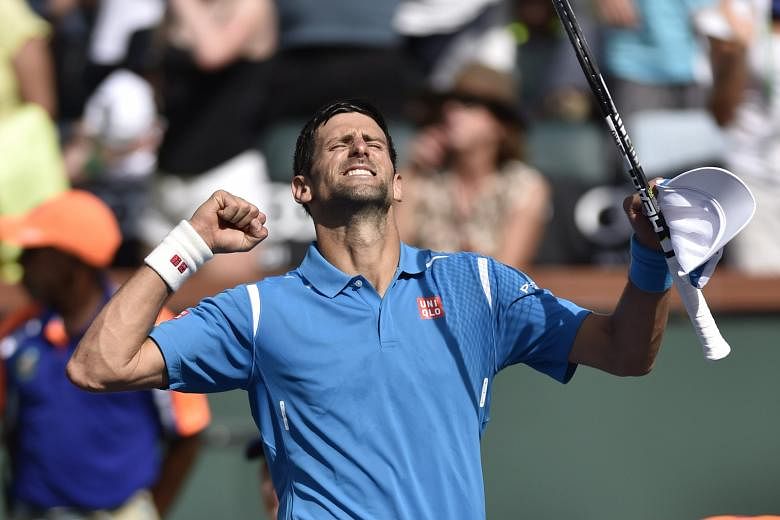INDIAN WELLS (California) • Even for the sport's best, any success against top-ranked Novak Djokovic - however relative - must be appreciated.
In the 48th instalment of one of the longest rivalries in men's tennis, the Serb dispatched Rafael Nadal 7-6 (7-5), 6-2 on Saturday in the semi-finals of the BNP Paribas Open.
Djokovic withstood an inspired start from the fifth-ranked Nadal before ultimately pulling away for his 25th victory over the 14-time Grand Slam champion. He was due to face the 14th-ranked Milos Raonic from Canada in the final yesterday (early this morning, Singapore time).
Though Nadal has now lost six straight matches and 13 straight sets to Djokovic, this match still represented progress. He was badly beaten, 6-1, 6-2, in their earlier meeting this year in the final of the Qatar Open. Nadal went on to lose in the first round of the Australian Open and entered the Indian Wells tournament 0-4 against opponents ranked in the top 50 this year.
But after he saved a match point against the German wunderkind Alexander Zverev in the fourth round, his game has reflected his growing confidence. His recently timid forehand has seemingly regained its bullying spirit.
Nadal struck quickly on Saturday, taking a 2-0 lead, and though the Serb immediately levelled the set at 2-2, it was played on the same level footing that has marked their rivalry for much of the past decade.
"Yeah, he was better; undoubtedly he prefers playing here comparing to Doha," Djokovic said of the Spaniard. "I think these conditions played in his favour more because of the ball bounce and the speed of the court."
With Nadal's top-spin forehand accentuated by the thin desert air and gritty courts, Djokovic was forced to summon a more robust defence than in their recent matches.
"He was trying to use that shot, move me around the court, and he did that at the beginning of the match," Djokovic said. "It could have gone either way, the first set, but I managed to stay composed and serve well in important moments, and just believe that I can win."
Nadal's resurgent run to the semi-finals will go a long way towards boosting his confidence but it also should quieten the critics who say his career is in a tailspin.
"I played well during the week," he said. "I won very interesting matches, good ones, fighting.
"Today was closer than the last couple of times against the best player in the world, so it was a very positive week for me.
"That's the way I'm going to try, to follow this way to keep going with this level. If I am able to play weeks in a row at this level, then you start to think about the chances to compete for everything."
Raonic, 25, is hardly young by traditional tennis standards, but he has been all but locked out of the upper echelon of the game in this era of dominance by Djokovic, Nadal, Andy Murray and Roger Federer.
Though 79 Masters events have been played since Djokovic won his first such title in Miami in 2007, none have been by a player younger than him. The Serb, who turns 29 in May, reflected on the lack of any breakthrough in the generation following his own.
"Certainly, those guys can play very well for a tournament or two, or two months," he said. "But can they play throughout the year at a very high level? That's a question mark. But it certainly is good for tennis to have young players coming up and challenging the best."
NEW YORK TIMES, AGENCE FRANCE- PRESSE

